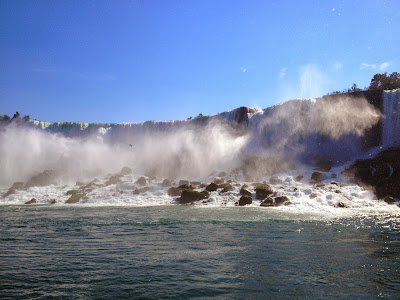The list is too long to describe everything I learned and did here, and it's not even settled down in my mind yet. It will take a few days for me to completely understand the magnitude of discussions, ideas and dreams we shared during the past days.
But I do want to highlight some of the things that completely blew my mind and already left a big mark:
- together we are stronger and all the dreams we have seem more real and possible. This was obvious to me during open sessions where communities from South America shared their struggles, aspirations, desires and successes. Just because we don't speak the same language doesn't mean we are different. In fact, I didn't have to fully understand Spanish to get what fellow Mozillians were saying. We all have the same problems, just at a different scale. We all dream for a better online world, just our approach to tackle the problems is different. And that's because Mozilla is a unique community of people with thousands of backgrounds, cultures and life perspectives.
- helping people is the best thing one can do in his/her life. Helping can be as little as smiling at someone who enters the hotel after a 16 hour flight and looks for a blue hoodie with the "Mozilla Summit 2013 SITE HOST" logo on it.
- coordinating social events is exhausting. No kidding. But the satisfaction you get out from doing this is beyond words in a blog post. It has to be tried at least once to see the tip of the iceberg.
- internet access in Bolivia is as much as $30/mo for a 512 Kbps line. And I'm complaining about my 20 Mpbs cable for $70. You are humbled when you speak to members of other communities about their cities and countries. Or when you find out how much they do with less technical resources than you.
- there is so much work to do in teaching youths, young adults and grown-ups about technology and openness. Webmaker is the ramp to go beyond everything one can imagine. And I proudly wore this pin this weekend:
- I work with the best IT team ever. An open session I had about Mozilla IT was an amazing discussion only because all my fellow coworkers were there to sustain me and contribute with their knowledge.
- I have to go to South America soon. Their energy, enthusiasm and positiveness was refreshing. Learning about their culture and life style was fascinating. It made me realize how little do I know about that part of the globe. And how much I want to learn. At minimum, start with a trip to Bolivia and eat achachairú :)
So, what's next? Participating to this summit was a confirmation that teaching will have a bigger part in my life in the future. I'm starting to like more and more talking to people, listening to them and finding answers together. This makes me so excited about the next Webmaker class I'll run at Year-Up in November.
I will always remember #mozfest 2013 and the friends I made here.
I dream of nothing stopping me,
from being who I want to be,
and Mozilla is my dinosaur,
so I can dream a little more.


























